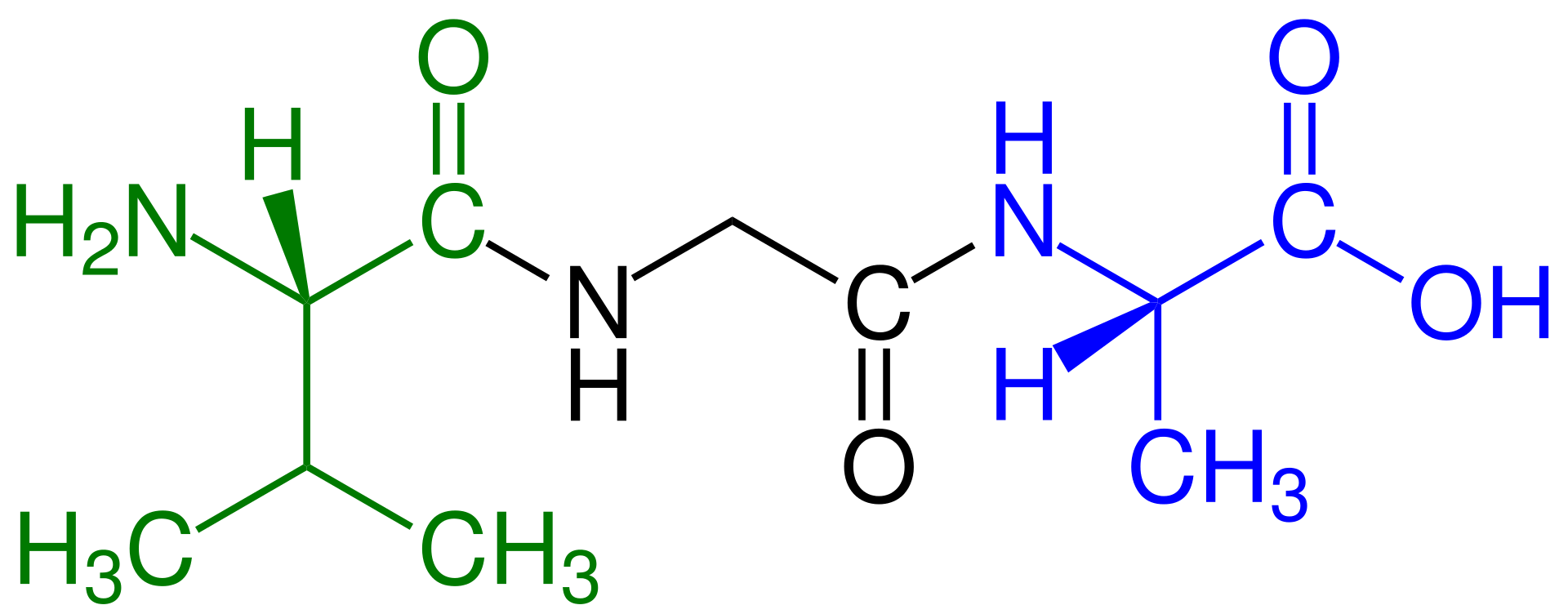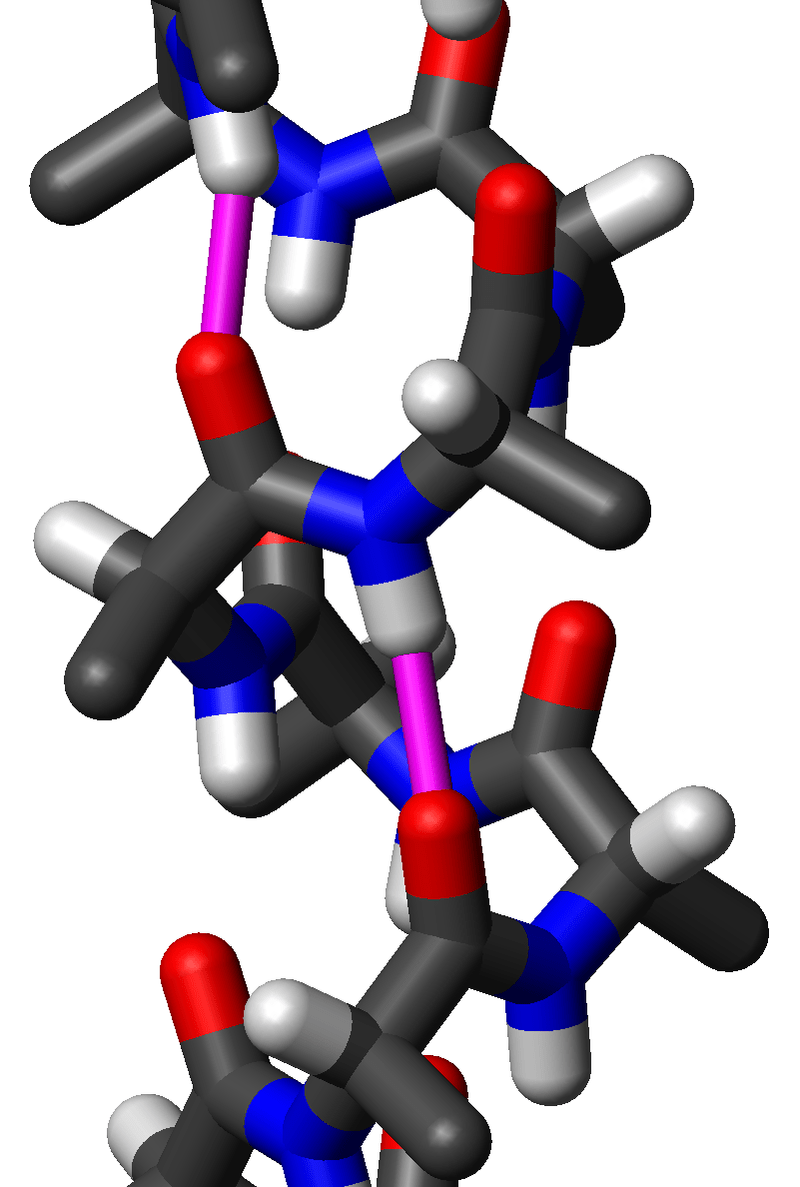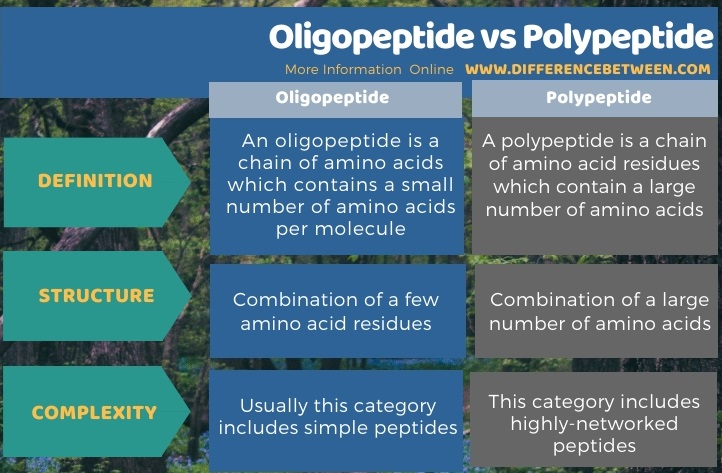Difference Between Oligopeptide and Polypeptide
The key difference between oligopeptide and polypeptide is that oligopeptides contain few amino acid residues, whereas polypeptides contain a large number of amino acid residues.
The terms oligopeptides and polypeptides come under the category of proteins. Peptides are short chains of amino acids. Amino acids bind with each other through peptide bonds. Therefore, we can categorize these peptides according to the number of amino acids present in these peptides. E.g., dipeptides, tripeptides, tetrapeptides, oligopeptides, and polypeptides.
CONTENTS
1. Overview and Key Difference
2. What is Oligopeptide
3. What is Polypeptide
4. Side by Side Comparison – Oligopeptide vs. Polypeptide in Tabular Form
5. Summary
What is Oligopeptide?
An oligopeptide is a chain of amino acids that contain a small number of amino acids per molecule. We often call these molecules “peptides,” as a general term. The number of amino acid residues present in these peptide molecules can range from two to twenty amino acids. Oligopeptides can also include some small peptide forms such as dipeptides, tripeptides, etc. Some common examples of naturally occurring oligopeptides include microviridin, cyanopeptolins, microcystins, etc.

Figure 01: Structure of a Tripeptide
These oligopeptides are produced by nonribosomal peptides synthases or NRPS. But there are some exceptions. E.g., cyclamides and microviridin are synthesized through ribosomic pathways. The process of isolation of oligopeptides includes oligopeptide enrichment, purification, and identification. For the identification process, we can use gel chromatography, HPLC, HPLC-mass spectroscopy, ion-exchange chromatography, etc.
What is Polypeptide
A polypeptide is a chain of amino acid residues which contain a large number of amino acids. A protein contains one or more polypeptide chains. In these polypeptide chains, the amino acids are linked to each other via peptide bonds, which are a type of covalent chemical bonds. Each polypeptide chain contains two terminals: N-terminal and C-terminal. The N-terminal is the amino-terminal, which ends with a free amino group, while the C-terminal is the carboxyl-terminal that ends with a free carboxyl group. The sequence of amino acids present in a peptide is determined by the codons in the mRNA that are involved in the production of the polypeptide or the protein via translating the template strand.
According to the number and arrangement of polypeptides in a protein, there are four major types of protein structures as follows:

Figure 02: Alpha Helix Structure
What is the Difference Between Oligopeptide and Polypeptide?
Oligopeptides and polypeptides are two different categories of proteins. They differ from each other depending on the number of amino acid residues present in the protein molecules. Therefore, the key difference between oligopeptide and polypeptide is that the oligopeptides contain few amino acid residues, whereas polypeptides contain a large number of amino acid residues.
The below infographic summarizes the difference between oligopeptide and polypeptide.

Summary – Oligopeptide vs. Polypeptide
Oligopeptides and polypeptides are two different categories of proteins. They differ from each other, depending on the number of amino acid residues present in these protein molecules. That is, the key difference between oligopeptide and polypeptide is that oligopeptides contain few amino acid residues, whereas polypeptides contain a large number of amino acid residues.
Reference:
1. Wang, Q., et al. “Peanut By-Products Utilization Technology.” Peanuts: Processing Technology and Product Development, 2016, pp. 211–325., doi:10.1016/b978-0-12-809595-9.00005-3.
2. “Oligopeptide.” Wikipedia, Wikimedia Foundation, 18 Dec. 2019, Available here.
3. “Polypeptide.” Biology Pages, Available here.
Image Courtesy:
1. “Tripeptide Val-Gly-Ala Formula V1” By Jü – Own work (CC BY-SA 4.0) via Commons Wikimedia
2. “Alpha helix neg60 neg45 sideview” By – WillowW assumed – No machine-readable source provided. Own work assumed (based on copyright claims) (CC BY-SA 3.0) via Commons Wikimedia
ncG1vNJzZmivp6x7pbXFn5yrnZ6YsqOx07CcnqZemLyue8OinZ%2Bdopq7pLGMm5ytr5Wau267y6KeqKiVpcGqsMRmmKecXaW8rcXPnqetoZSafA%3D%3D